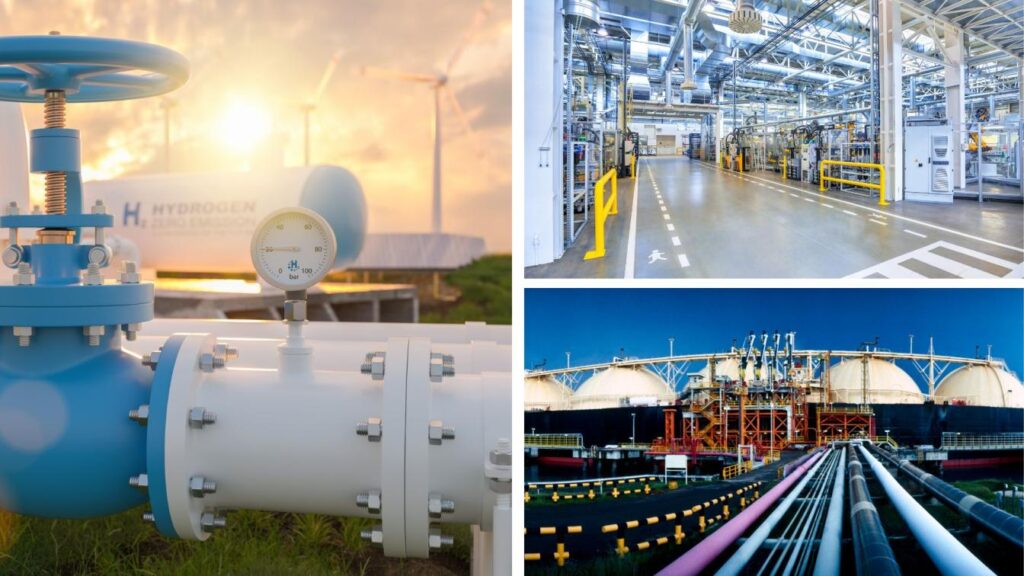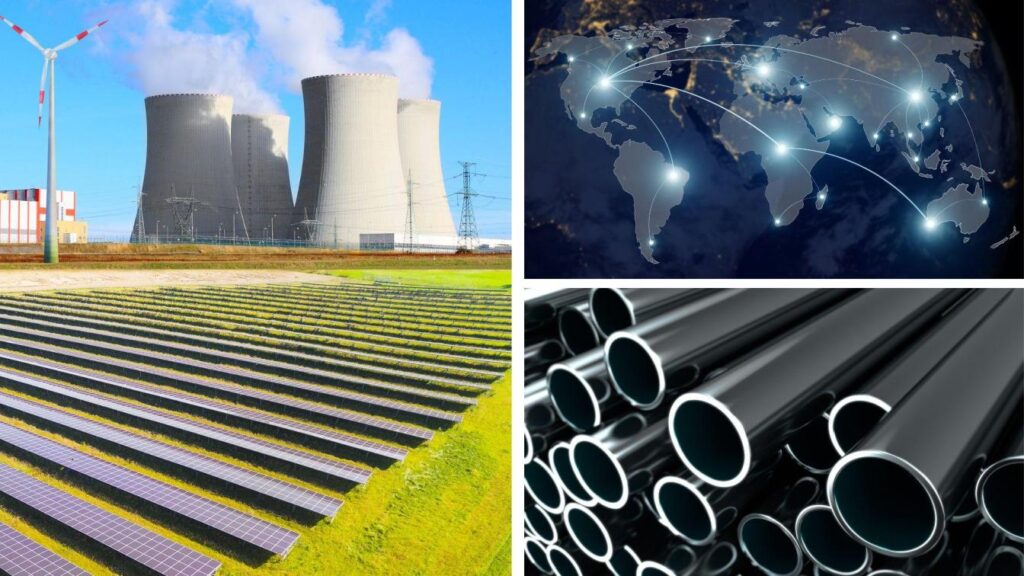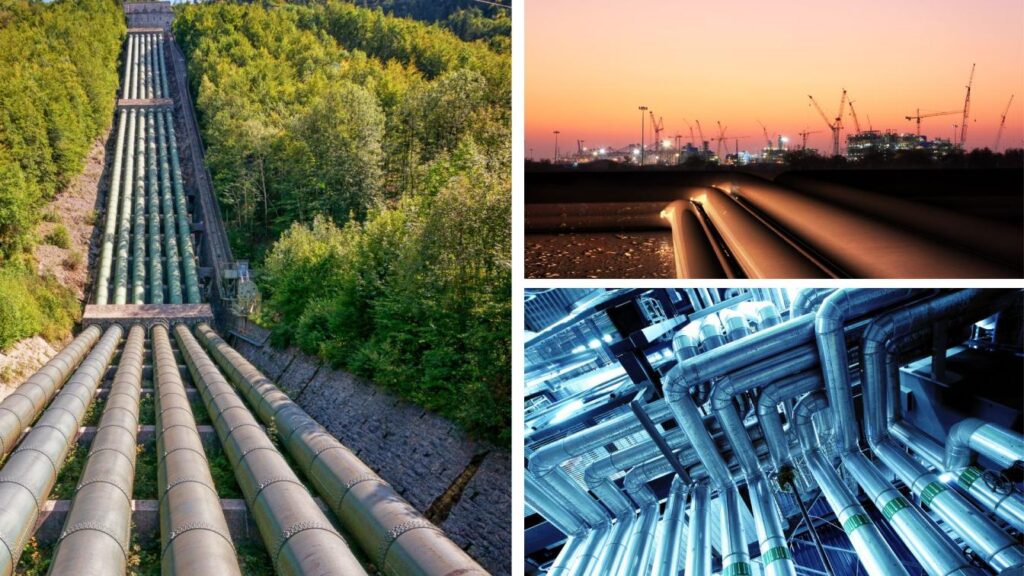The Next Challenge as AI Drives Surging Energy Consumption
As artificial intelligence (AI) rapidly transforms industries and reshapes our world, a critical challenge is emerging: the surging energy consumption required to fuel this AI revolution. With the rapid growth of AI adoption across sectors, the demand for electricity to power data centers and AI infrastructure is set to skyrocket, putting unprecedented strain on our power generation systems. In this comprehensive article, we’ll dive deep into the complex relationship between AI and energy, exploring the reasons behind AI’s growing energy demands, the potential consequences for our power generation infrastructure, and the innovative solutions being developed to address this critical issue.
Understanding the Energy Demands of AI
To grasp the magnitude of the energy challenge posed by AI, it’s essential to understand what drives its increasing power consumption. At the heart of AI’s energy consumption lies its computational complexity. As AI models become more sophisticated, they require vast amounts of computing power to process and analyze massive datasets, train complex algorithms, and generate accurate predictions. This computational intensity translates directly into higher energy consumption.
The rise of AI has also fueled a surge in demand for data centers, the physical infrastructure that houses the servers, storage systems, and networking equipment necessary to support AI applications. These data centers consume significant amounts of electricity to power and cool the hardware, contributing to AI’s overall energy footprint. Furthermore, AI models don’t just consume energy during their initial training phase. They continue to learn and adapt as they process new data, a process known as inference. This continuous learning and inference require ongoing energy consumption, adding to the long-term energy demands of AI systems.
The Growing Energy Footprint of AI
With a clearer understanding of the factors driving AI’s energy consumption, let’s examine the current state of AI’s energy footprint and its projected growth in the coming years.
- Recent studies estimate that the global data center electricity consumption related to AI and other emerging technologies like blockchain and 5G could reach 2% of the world’s total electricity demand by 2026. To put that in perspective, it’s equivalent to the current electricity consumption of a country like Japan.
- Looking further ahead, some projections suggest that AI servers alone could consume as much as 85 to 134 terawatt-hours of electricity annually by 2027. That’s more than the annual energy consumption of many small countries.
These staggering numbers underscore the urgent need to address AI’s growing energy footprint. If left unchecked, the power demands of AI could strain our existing energy infrastructure and contribute to increased greenhouse gas emissions, exacerbating the global climate crisis.
The Impact on Power Generation Infrastructure
As AI’s energy consumption continues to rise, it poses significant challenges for our power generation infrastructure. The growing energy demands of AI are placing unprecedented strain on our electrical grids. As more data centers come online to support AI applications, they require reliable, high-capacity power connections to ensure uninterrupted operation. This increased demand can lead to grid congestion, power quality issues, and even outages if not properly managed.
AI is also changing the way we consume energy, with data centers often requiring power around the clock to support continuous learning and inference. This shift towards 24/7 energy consumption patterns can disrupt traditional load balancing strategies and require more flexible, responsive power generation solutions. Furthermore, as concerns about AI’s carbon footprint grow, there is increasing pressure on data center operators to power their facilities with renewable energy sources like wind and solar. However, the intermittent nature of these renewable sources can pose challenges for data centers that require consistent, reliable power. This is driving demand for advanced energy storage solutions and smart grid technologies to help balance supply and demand.
Innovative Solutions for Sustainable AI
While the energy challenges posed by AI are significant, there are also many innovative solutions being developed to help mitigate its impact and ensure a more sustainable future for this transformative technology.
| Solution | Description |
|---|---|
| Energy-Efficient AI Hardware | Chip manufacturers like NVIDIA and Intel are investing heavily in designing specialized processors optimized for AI workloads, with a focus on reducing power consumption and improving performance per watt. |
| Advanced Cooling Technologies | Data centers are exploring advanced cooling technologies to reduce the energy required to keep AI hardware running at optimal temperatures. From liquid cooling systems that use water or other fluids to absorb heat, to AI-powered cooling optimization software that dynamically adjusts cooling parameters based on real-time conditions, these innovations are helping to minimize the energy footprint of AI infrastructure. |
| Renewable Energy Integration | To address the carbon footprint of AI, many data center operators are turning to renewable energy sources to power their facilities. This includes investing in on-site solar and wind generation, as well as purchasing renewable energy credits and entering into power purchase agreements with clean energy providers. By transitioning to renewable energy, data centers can help decouple AI’s growth from its environmental impact. |
| AI-Powered Optimization | Ironically, AI itself may hold the key to optimizing its own energy consumption. By leveraging AI algorithms to analyze energy usage patterns, predict demand, and optimize power distribution, data centers can reduce waste and improve efficiency. This “AI for AI” approach is already showing promising results, with some studies suggesting that AI-powered energy optimization could reduce data center energy consumption by up to 15%. |
The Path Forward: Collaboration and Innovation
Addressing the energy challenges posed by AI will require a collaborative effort across industries, from technology companies and data center operators to power utilities and policymakers. By working together to drive innovation, share best practices, and develop sustainable solutions, we can ensure that the transformative potential of AI is realized without compromising our energy future.
Some key areas for collaboration and innovation include:
- Developing industry standards and best practices for energy-efficient AI
- Investing in research and development of advanced energy technologies
- Promoting the adoption of renewable energy and energy storage solutions
- Encouraging cross-sector partnerships to drive innovation and knowledge sharing
- Supporting policies and regulations that incentivize sustainable AI practices
By taking a proactive, collaborative approach to addressing the energy challenges of AI, we can lay the foundation for a more sustainable, resilient, and innovative future.
Powering the Future of AI
The rapid growth of artificial intelligence presents both incredible opportunities and significant challenges for our energy future. As AI continues to transform industries and reshape our world, it is crucial that we confront its growing energy footprint head-on, developing innovative solutions to ensure that this transformative technology can thrive without compromising our planet’s resources.
By investing in energy-efficient hardware, advanced cooling technologies, renewable energy integration, and AI-powered optimization, we can build a more sustainable foundation for the future of AI. And by fostering collaboration and innovation across industries, we can unlock the full potential of this game-changing technology while ensuring a cleaner, greener energy future for all.
As we navigate the complex relationship between AI and energy, it is clear that the path forward will require ongoing research, investment, and collaboration. But with the right strategies and a shared commitment to sustainability, we can rise to the challenge and power the future of AI in a way that benefits both our technological progress and our planet’s well-being.
So let us embrace the opportunity before us, and work together to build an energy future that can keep pace with the transformative power of artificial intelligence. The future is ours to shape, and with innovation, collaboration, and a steadfast commitment to sustainability, we can ensure that the age of AI is one of both technological wonder and environmental responsibility.
Nexa Pipe: Enabling Sustainable Energy Solutions for the AI Revolution
As the rapid growth of artificial intelligence (AI) drives a surge in energy consumption, innovative solutions are needed to ensure a sustainable future for this transformative technology. Nexa Pipe, with its cutting-edge pipeline technology and solutions, is well-positioned to address the challenges related to AI’s growing energy demands and its impact on power generation infrastructure. Here are several key ways Nexa Pipe can help:
- Enabling clean energy transportation for AI data centers: Nexa Pipe’s advanced composite pipe technology is well-suited for safely transporting clean energy sources like hydrogen and ammonia that are critical for decarbonizing the energy-intensive AI industry. Their corrosion-resistant pipes with high pressure and temperature ratings can support the shift to renewable energy to power AI data centers and reduce their carbon footprint.
- Improving efficiency of data center cooling systems: AI hardware generates significant heat, requiring powerful cooling in data centers. Nexa Pipe’s relining solutions can restore and enhance the performance of existing cooling system pipelines in data centers without expensive and disruptive replacement. This improves cooling efficiency and reduces energy consumption.
- Supporting carbon capture and storage (CCS) infrastructure: To offset emissions from fossil-fuel powered data centers, the AI industry may increasingly rely on CCS. Nexa’s pipe technology is ideal for transporting corrosive CO2 in CCS applications, enabling this important decarbonization pathway for data centers.
| Solution | Benefit |
|---|---|
| Faster and more sustainable deployment of new AI infrastructure | Nexa’s onsite pipe manufacturing allows rapid installation of pipelines for new AI data centers with lower costs, emissions and environmental impact compared to traditional methods. This accelerates build-out of cleaner data center infrastructure. |
| Repurposing existing pipeline infrastructure for AI | Nexa’s relining technology can cost-effectively convert aging fossil fuel pipelines, like those for natural gas, to transport clean hydrogen instead to data centers. This avoids the cost and environmental impact of building entirely new clean energy pipeline infrastructure. |
Enabling green AI innovation through collaboration: By connecting its innovation platform Mining Lab with the Israeli tech ecosystem, Nexa Pipe can foster development of novel clean energy and sustainable pipeline solutions tailored for the unique needs of the rapidly growing AI industry.
In summary, Nexa Pipe’s innovative pipeline technologies provide critical solutions for decarbonizing energy infrastructure, improving efficiency, and enabling sustainable growth of the power-hungry AI industry. Through their products and collaborative innovation approach, Nexa Pipe is well positioned to be a key partner in overcoming the energy challenges posed by society’s accelerating adoption of artificial intelligence.
Nexa Pipe: Revolutionizing Energy Infrastructure for the AI Era
As the energy demands of artificial intelligence (AI) continue to surge, innovative solutions are needed to ensure a sustainable and reliable power infrastructure. Nexa Pipe stands out in the market with its cutting-edge pipeline technology, offering a range of advantages over traditional solutions. Let’s explore how Nexa Pipe’s technology compares to other options in addressing the energy challenges of AI.
Innovative Composite Pipe Materials
Nexa Pipe leverages proprietary polymers, nano-materials, and advanced resins to create high-performance composite pipes that surpass the limitations of legacy pipeline materials like steel. These state-of-the-art materials enable pipes with:
- Superior temperature resistance
- Enhanced pressure tolerance
- Exceptional corrosion resistance
By utilizing these innovative composite materials, Nexa Pipe ensures that its pipelines can withstand the demanding conditions associated with transporting energy resources for AI infrastructure.
Mobile On-Site Manufacturing
Traditional pipe manufacturing often involves costly and emissions-intensive transportation from production facilities to installation sites. Nexa Pipe revolutionizes this process with its compact mobile factories, capable of constructing long, continuous lengths of composite pipe directly at the installation location. This approach offers several benefits:
| Benefit | Description |
|---|---|
| Reduced Transportation Costs | By manufacturing pipes on-site, Nexa Pipe eliminates the need for long-distance transportation, resulting in significant cost savings. |
| Lower Emissions | On-site manufacturing minimizes the carbon footprint associated with transporting pipes, contributing to a more sustainable energy infrastructure. |
| Faster Installation | With pipes readily available at the installation site, Nexa Pipe streamlines the deployment process, enabling quicker completion of energy projects. |
Efficient Pipe Relining Solutions
Nexa Pipe’s innovative relining technology offers a cost-effective and minimally disruptive solution for restoring and repurposing existing, aging pipelines. Instead of expensive and time-consuming excavation and replacement, Nexa Pipe’s relining process allows for:
- Rehabilitation of deteriorating pipelines
- Conversion of legacy infrastructure for new applications
- Minimized disruption to surrounding environments
This efficient relining solution is particularly valuable for adapting existing pipeline networks to transport clean energy resources, such as hydrogen, to power AI data centers.
Lower Installation Costs and Emissions
Nexa Pipe’s installation methods offer significant advantages over conventional steel pipe installation:
- 60% lower CO2 emissions
- 80% less heavy equipment use
- 93% less labor
- 60% lower overall costs
Additionally, Nexa Pipe’s long pipe sections require 95% fewer connection joints, further streamlining the installation process and reducing potential points of failure.
Corrosion Resistance for CO2 and Hydrogen
As the energy landscape evolves, the ability to safely transport corrosive fluids like CO2 and hydrogen becomes increasingly critical. Nexa Pipe’s composite pipes excel in this regard, offering superior corrosion resistance compared to traditional steel pipes. This advantage translates to:
- Reduced maintenance requirements
- Improved safety and reliability
- Longer pipeline lifespan
By enabling the secure transportation of CO2 for carbon capture and storage applications, as well as clean hydrogen for AI data centers, Nexa Pipe’s corrosion-resistant pipes play a vital role in decarbonizing energy infrastructure.
Conclusion
Nexa Pipe’s cutting-edge pipeline technology offers a comprehensive solution for addressing the energy challenges posed by the rapid growth of AI. With its innovative composite materials, mobile on-site manufacturing, efficient relining solutions, lower installation costs and emissions, and corrosion resistance for CO2 and hydrogen, Nexa Pipe is well-positioned to revolutionize energy infrastructure in the AI era.
As the demand for sustainable and reliable energy solutions continues to grow, Nexa Pipe’s technology emerges as a compelling alternative to conventional pipeline systems. By embracing innovation and efficiency, Nexa Pipe is paving the way for a cleaner, more resilient energy future that can keep pace with the transformative power of artificial intelligence.
https://www.mckinsey.com/featured-insights/mckinsey-explainers/whats-the-future-of-ai


